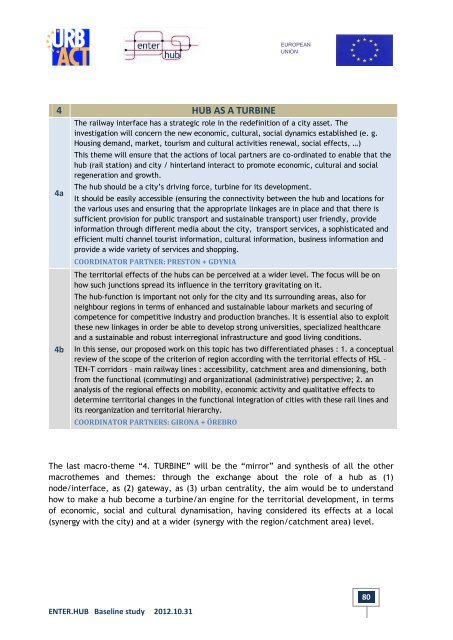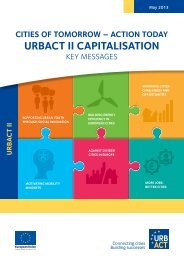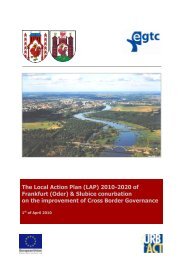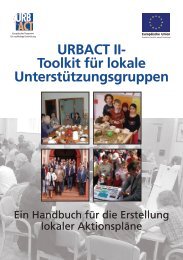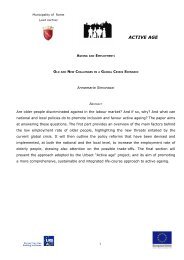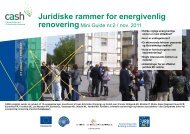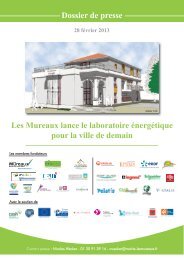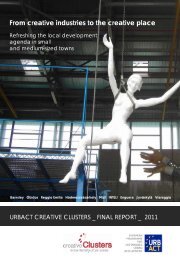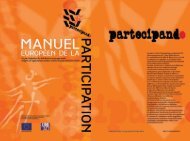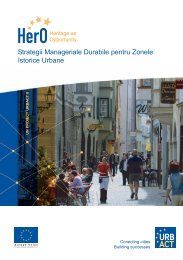ENTER.HUB_Baseline study PDF, 6 Mo - Urbact
ENTER.HUB_Baseline study PDF, 6 Mo - Urbact
ENTER.HUB_Baseline study PDF, 6 Mo - Urbact
You also want an ePaper? Increase the reach of your titles
YUMPU automatically turns print PDFs into web optimized ePapers that Google loves.
EUROPEAN<br />
UNION<br />
European Regional<br />
Development Fund<br />
4 <strong>HUB</strong> AS A TURBINE<br />
4a<br />
4b<br />
The railway interface has a strategic role in the redefinition of a city asset. The<br />
investigation will concern the new economic, cultural, social dynamics established (e. g.<br />
Housing demand, market, tourism and cultural activities renewal, social effects, …)<br />
This theme will ensure that the actions of local partners are co-ordinated to enable that the<br />
hub (rail station) and city / hinterland interact to promote economic, cultural and social<br />
regeneration and growth.<br />
The hub should be a city’s driving force, turbine for its development.<br />
It should be easily accessible (ensuring the connectivity between the hub and locations for<br />
the various uses and ensuring that the appropriate linkages are in place and that there is<br />
sufficient provision for public transport and sustainable transport) user friendly, provide<br />
information through different media about the city, transport services, a sophisticated and<br />
efficient multi channel tourist information, cultural information, business information and<br />
provide a wide variety of services and shopping.<br />
COORDINATOR PARTNER: PRESTON + GDYNIA<br />
The territorial effects of the hubs can be perceived at a wider level. The focus will be on<br />
how such junctions spread its influence in the territory gravitating on it.<br />
The hub-function is important not only for the city and its surrounding areas, also for<br />
neighbour regions in terms of enhanced and sustainable labour markets and securing of<br />
competence for competitive industry and production branches. It is essential also to exploit<br />
these new linkages in order be able to develop strong universities, specialized healthcare<br />
and a sustainable and robust interregional infrastructure and good living conditions.<br />
In this sense, our proposed work on this topic has two differentiated phases : 1. a conceptual<br />
review of the scope of the criterion of region according with the territorial effects of HSL –<br />
TEN-T corridors – main railway lines : accessibility, catchment area and dimensioning, both<br />
from the functional (commuting) and organizational (administrative) perspective; 2. an<br />
analysis of the regional effects on mobility, economic activity and qualitative effects to<br />
determine territorial changes in the functional integration of cities with these rail lines and<br />
its reorganization and territorial hierarchy.<br />
COORDINATOR PARTNERS: GIRONA + ÖREBRO<br />
The last macro-theme “4. TURBINE” will be the “mirror” and synthesis of all the other<br />
macrothemes and themes: through the exchange about the role of a hub as (1)<br />
node/interface, as (2) gateway, as (3) urban centrality, the aim would be to understand<br />
how to make a hub become a turbine/an engine for the territorial development, in terms<br />
of economic, social and cultural dynamisation, having considered its effects at a local<br />
(synergy with the city) and at a wider (synergy with the region/catchment area) level.<br />
<strong>ENTER</strong>.<strong>HUB</strong> <strong>Baseline</strong> <strong>study</strong> 2012.10.31<br />
80


